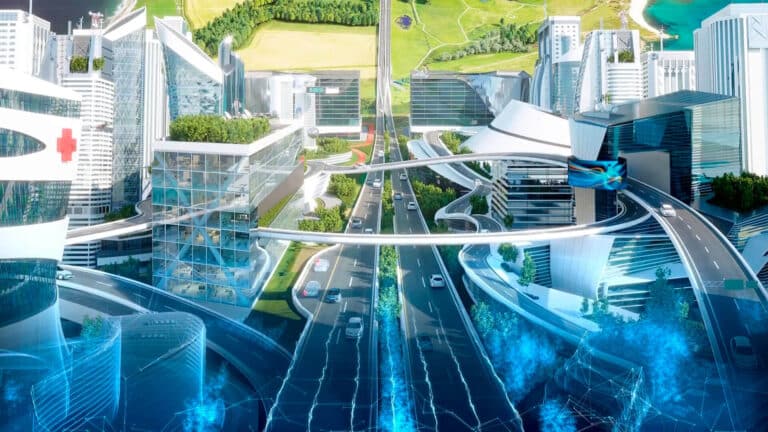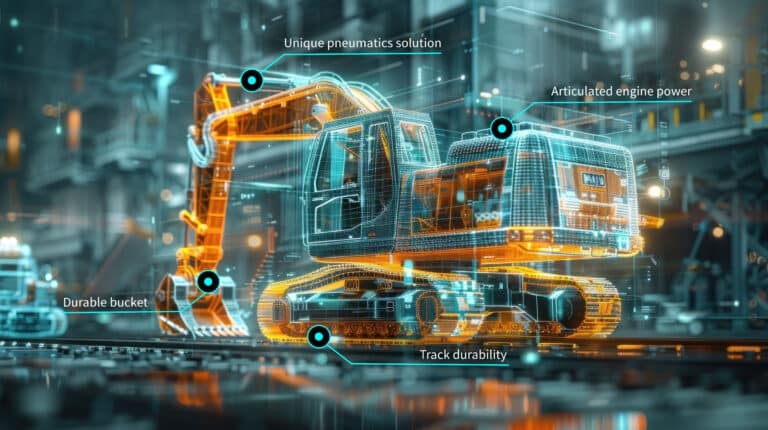Hitachi High-Tech Analytical Science Finland and Stereoscape recently collaborated on a proof of concept project utilising augmented reality maintenance instructions, powered by RE’FLEKT, to showcase and promote the possibilities of digitalisation within the global organisation.
We sat down with Hitachi High-Tech Analytical Science’s Managing Director Antti Virolainen and Site Operations Manager Pamela Vartiovaara to talk about work augmentation and how AR can help in the service and maintenance of complex equipment and the strategic role of the proof of concept project in the organisation’s digitalisation push.
1. Tell us a little bit about your background, and your role at Hitachi High-Tech Analytical Science Finland.
AV: I joined the company in 2012 and for the last years I’ve worked mainly in R/D management positions.
PV: I have a long history in the company and have had various roles in R&D, Manufacturing Engineering and operations during my almost 20 years career here. Our latest owner Hitachi acquired us three years ago. Currently, I’m in charge of the local operations and manufacturing engineering teams.
2. What does Hitachi High-Tech Analytical Science do?
At Hitachi High-Tech Analytical Science, we develop and manufacture rugged and reliable products for materials analysis in various quality-conscious and mission-critical fields. Our vision is to bring the best-in-class user experience to high-technology instruments.
3. You are in the process of finalising a proof-of-concept project with Stereoscape, utilising augmented reality (AR) to visually guide service engineers in a complex maintenance task. How did this project come about, and how do you see it promoting your organisation’s wider digitalisation plans?
Digitalization has been in our focus for several years now, and we already did the first PoC level AR experiment with Stereoscape a few years ago. The resulting AR content was presented to our Hitachi colleagues as well at the time. That made a positive impact, and last December our Japanese colleagues requested us to deliver a follow-up PoC with a bit more functionality.
The AR is something that we want to be investigating more. We are currently engaging a larger team to brainstorm the best use cases in our organization.
4. Augmented reality is one of the key technologies in work augmentation, using digital technologies to improve how workers do their jobs. AR makes it possible to project digital step-by-step instructions directly onto real-world objects, like machinery and equipment. How do you think augmented reality will change work in your organisation?
We see that the AR will improve the user experience, remove errors and increase productivity in several areas, e.g., new operator training in the production, service engineer training and field service. There are also endless opportunities for creating supporting material for almost any department.
5. Are there specific business or operational benefits you expect from the proof-of-concept, and from augmented reality maintenance instructions more broadly?
We wanted to increase the awareness and knowledge of AR tools in the organization and help our teams to see the underlying opportunities. To improve the level of digitalization, the wider team must understand what is possible with the latest technology and identify its limitations.
6. You mentioned the proof of concept is a part of your organisation’s wider digitalisation push. How have you used the PoC created with Stereoscape to promote digitalisation within your organisation? What has the feedback been like, so far?
We shared the AR content with the steering group in Japan and with the service team in our division. So far, everyone has been positively surprised and has many ideas on how to utilize the technology.
7. About the proof-of-concept itself, how was the process of collaborating with Stereoscape? Have the end-users (service engineers) been satisfied with the functionality of the AR instructions?
The collaboration with Stereoscape was very smooth and effective. I believe the total time to have the working AR content was only a couple of weeks. The content was created to an instrument still in the R&D phase, so the engineers could not test with a real instrument, but the initial response was very positive.
8. Would you have any tips for other companies considering trialling or piloting the use of AR maintenance instructions?
It is essential to start, not so important what the first solution is. This field is developing with giant leaps now, and it is crucial to take the first step of learning and implementing the technology.
Read the whole case study description.

